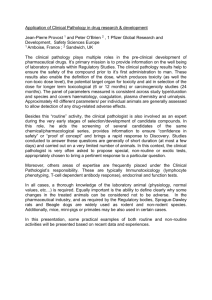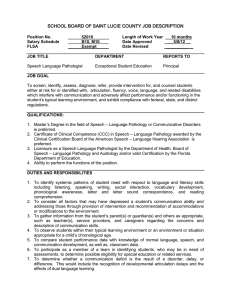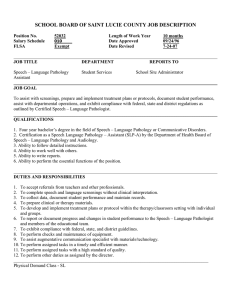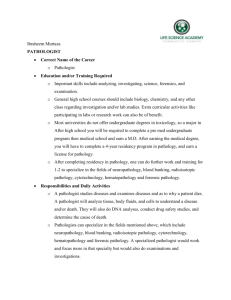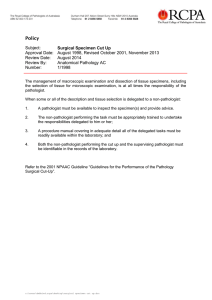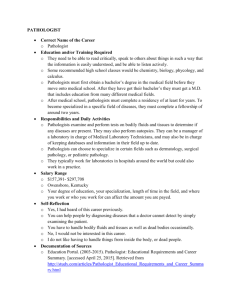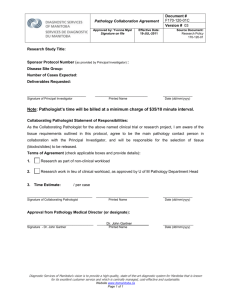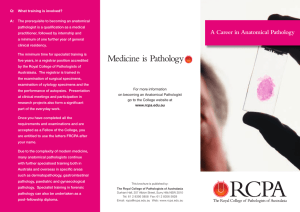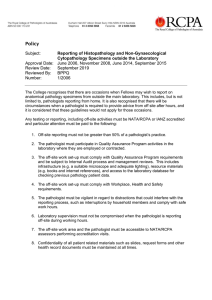Guideline Subject:
advertisement
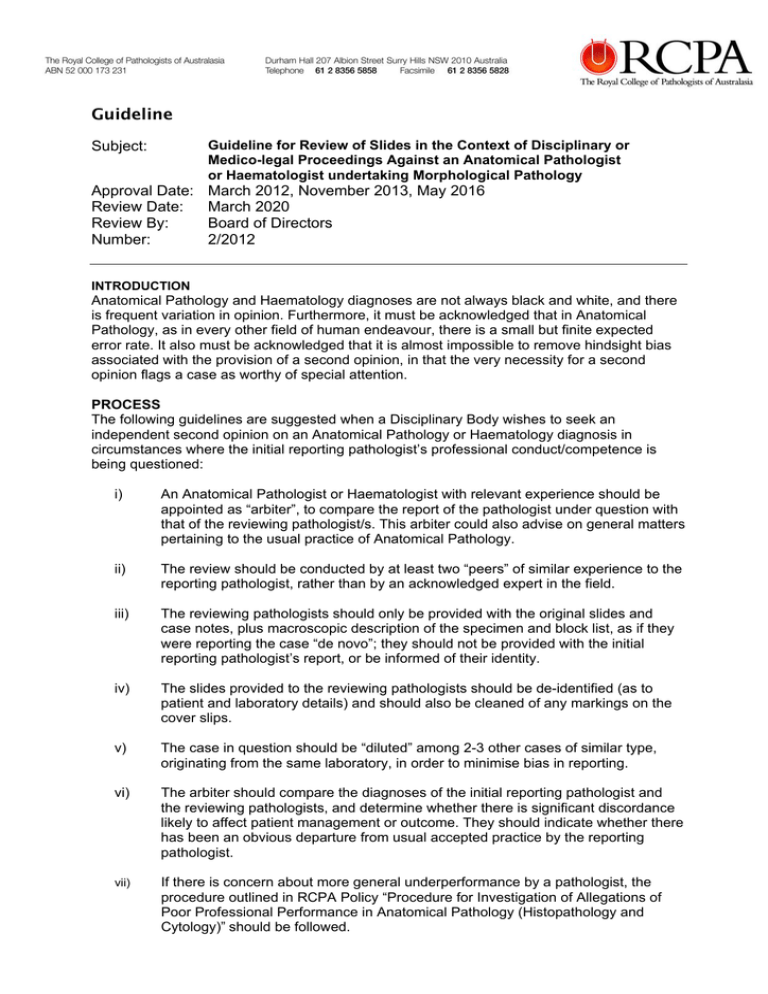
Guideline Subject: Guideline for Review of Slides in the Context of Disciplinary or Medico-legal Proceedings Against an Anatomical Pathologist or Haematologist undertaking Morphological Pathology Approval Date: Review Date: Review By: Number: March 2012, November 2013, May 2016 March 2020 Board of Directors 2/2012 INTRODUCTION Anatomical Pathology and Haematology diagnoses are not always black and white, and there is frequent variation in opinion. Furthermore, it must be acknowledged that in Anatomical Pathology, as in every other field of human endeavour, there is a small but finite expected error rate. It also must be acknowledged that it is almost impossible to remove hindsight bias associated with the provision of a second opinion, in that the very necessity for a second opinion flags a case as worthy of special attention. PROCESS The following guidelines are suggested when a Disciplinary Body wishes to seek an independent second opinion on an Anatomical Pathology or Haematology diagnosis in circumstances where the initial reporting pathologist’s professional conduct/competence is being questioned: i) An Anatomical Pathologist or Haematologist with relevant experience should be appointed as “arbiter”, to compare the report of the pathologist under question with that of the reviewing pathologist/s. This arbiter could also advise on general matters pertaining to the usual practice of Anatomical Pathology. ii) The review should be conducted by at least two “peers” of similar experience to the reporting pathologist, rather than by an acknowledged expert in the field. iii) The reviewing pathologists should only be provided with the original slides and case notes, plus macroscopic description of the specimen and block list, as if they were reporting the case “de novo”; they should not be provided with the initial reporting pathologist’s report, or be informed of their identity. iv) The slides provided to the reviewing pathologists should be de-identified (as to patient and laboratory details) and should also be cleaned of any markings on the cover slips. v) The case in question should be “diluted” among 2-3 other cases of similar type, originating from the same laboratory, in order to minimise bias in reporting. vi) The arbiter should compare the diagnoses of the initial reporting pathologist and the reviewing pathologists, and determine whether there is significant discordance likely to affect patient management or outcome. They should indicate whether there has been an obvious departure from usual accepted practice by the reporting pathologist. vii) If there is concern about more general underperformance by a pathologist, the procedure outlined in RCPA Policy “Procedure for Investigation of Allegations of Poor Professional Performance in Anatomical Pathology (Histopathology and Cytology)” should be followed.
